
Route No. 1: Route du Col
Medium
Corresponding snowshoeing ratings :
R2
Recommended for :
- Occasional hikers (1-2 outings per week)
- Active families with sporty children (aged 10 and over)
Description
To check snow conditions, click here.
2.3 km ascent from Prey du Milieu - approx. 205m ascent
Reach the Pelvoux lookout via the old meadows of the picturesque hamlet of Prey d'Amont.
Markings: blue or purple flags and black "piétons/raquettes" signs on a yellow background.
Description:
Once parked at Prey du Milieu, take the Col road past the parking lot.
- Follow the road through the hamlet of Prey d'Amont.
- Follow the road up the hairpin bend to the Pelvoux lookout.
- Towns crossed : Les Vigneaux and Puy-Saint-Vincent
Equipment
Water and snacks
Warm clothing (avoid jeans)
High boots (hiking, rigid snow boots)
Walking poles
Sun screen
Sunglasses
Hat/cap
Small first-aid kit
Sensitive areas
Peregrine falcon
- Impacted practices:
- Aerial, Vertical
- Sensitivity periods:
- FebMarAprMayJun
- Contact:
- Parc National des Écrins
Julien Charron
julien.charron@ecrins-parcnational.fr
Recommandations
A few rules:
→ You use these routes at your own risk. Find out about the weather conditions and avalanche risks published by Météo France. Also, don't hesitate to ask at tourist information offices or the Nordic chalet before you set off.
→ For avalanche-prone trails, we strongly advise you to take your avalanche transceiver, shovel and probe with you.
→ Night-time activities on Nordic areas are prohibited. It must be supervised by a professional and must be authorized by the ski slopes service.
→ Several itineraries are shared with cross-country skiers and ski tourers: give them priority, always walk along the edge of the piste and be vigilant when crossing these shared paths.
→ Many routes cross downhill ski slopes; be vigilant and give skiers the right of way.
→ Don't walk in the cross-country ski tracks, straddle them.
→ Respect the signposting: dangers, prohibitions, trail directions, among other things.
→ Don't overestimate your abilities!
→ Dogs are tolerated, on a leash, off the cross-country ski trails (dogs prohibited on the Lauzet itinerary of the Puy-Saint-Vincent ski area, reserved for approved sled dog teams).
→ Take your garbage with you!
Please note : This information is given for guidance only. It is your responsibility to check the weather forecast before setting off and not to overestimate your possibilities. The Tourist Office and the PNE cannot be held responsible in the event of an accident. In case of doubt, contact professionals: instructors or equipment hire companies.
Mountain Rescue : dial 112
7 points of interest
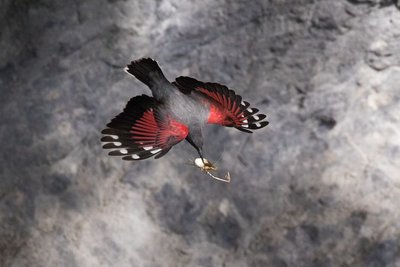
Tichodrome échelette - Pascal Saulay - Parc national des Écrins  Fauna
FaunaCliff-dwelling birds
The cliff is home to a variety of birdlife. The raven, not to be confused with the crow, frequently nests here. He makes an uncomfortable housemate with the peregrine falcon, a bird in sharp decline and still a vulnerable species. It, too, favours this cliff, which offers plenty of potential nesting holes. The wallcreeper, also known as the butterfly bird, also finds this a good nesting spot. Some climbing routes are closed during this bird's breeding season.
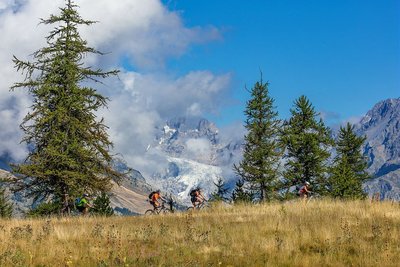
Col de la Pousterle - Bertrand Bodin - Parc national des Écrins  Pass
PassThe Col de la Pousterle
A pousterle (in the local high-alpine Occitan language) is a small gate, a postern. It comes from the Latin posterula which means back door. This place name is sometimes given to a pass, which could be described as a gateway between two valleys! The glaciers carved out this gateway through which an arm stretched between the glacier occupying the Fournel valley and the glacier flowing down the Vallouise valley.
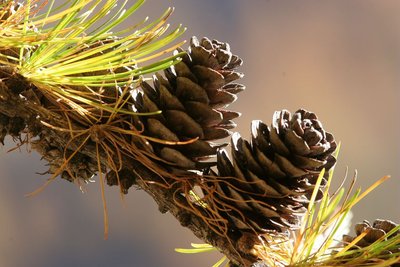
Mélèze avec cônes - Robert Chevalier - Parc national des Écrins  Flora
FloraThe larch
The symbol of the Southern Alps, this softwood tree loses its leaves in winter, and is swathed with gold and lights up the mountains in autumn. The larch forests are maintained by the grazing of flocks. Without them, other trees like the fir or other pine trees could grow, creating a different kind of forest. A pioneer species, the larch establishes freely in light conditions. Its solid rot-proof wood has always been used in the construction of houses.
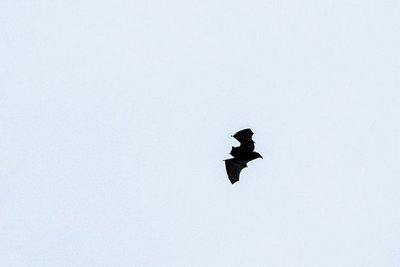
Chauve-souris en vol en contre jour - Mireille Coulon - Parc national des Écrins  Fauna
FaunaForest-dwelling bats
Bats don't just live in caves! In summer, some forest-dwelling species shelter in old hollow trees or woodpecker holes during the day. Sometimes, the females also form little colonies here, where their young will be born (one bat pup per female). In this forest, which is still young with very few old trees, artificial roosts have been installed to help the bats and to facilitate their study.
Chalet - Jan Novak  Panorama
PanoramaTournoux
The Tournoux plateau is a small paradise with its cool meadows, its occasional renovated chalets made from stone and larch wood and its view over the Tête d'Aval, an imposing limestone peak forming part of the Montbrison massif. Whether on a mountain bike, on foot or on cross-country skis in the winter, this spot is always an invitation to stop for a break!
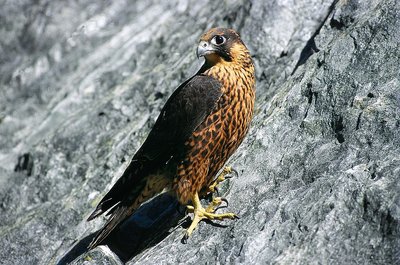
Faucon pèlerin - Fiat Denis - Parc national des Écrins  Fauna
FaunaThe peregrine falcon
Cries echo around the cliffs. A pair of peregrine falcons nests there regularly. A real "fighter plane" with tapered wings, it is a formidable predator of pigeons and other birds. It came very close to extinction because of pesticides, but it remains endangered because the eggs are still stolen for the falconry trade, even though it is a protected species. It is also sensitive to disturbance. Climbers are urged not to climb in this area in the spring.
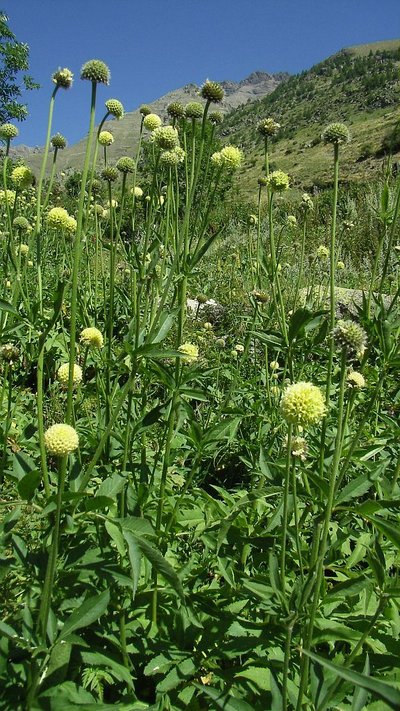
Céphalaire des Alpes - Marie-Geneviève Nicolas - Parc national des Écrins  Flora
FloraThe yellow cephalaria
Rather like a tall scabious (up to 2 metres) but with pale yellow flower heads, this is not a common plant. Yet, at an intersection of two tracks, it has established on a small patch of ground. Who knows why! It is a mountain plant which only lives in the west of the Alpine Arc..
